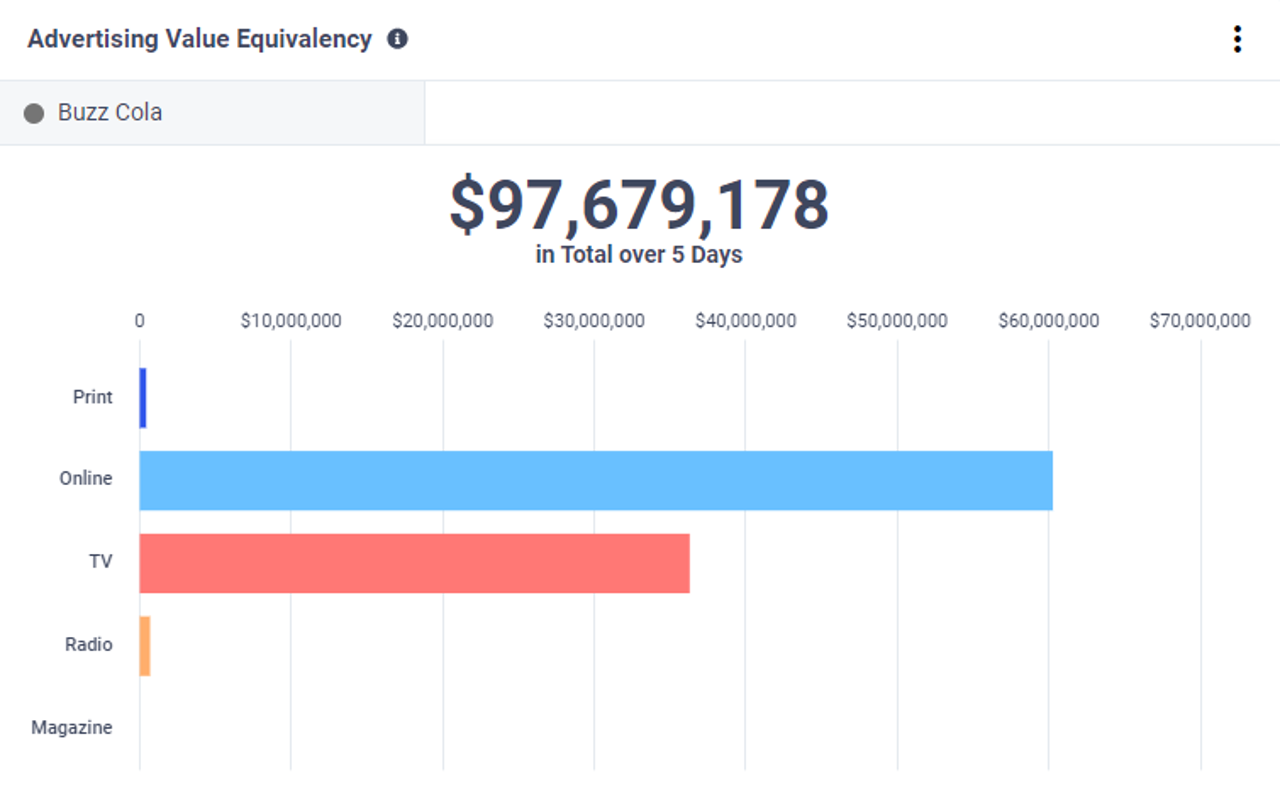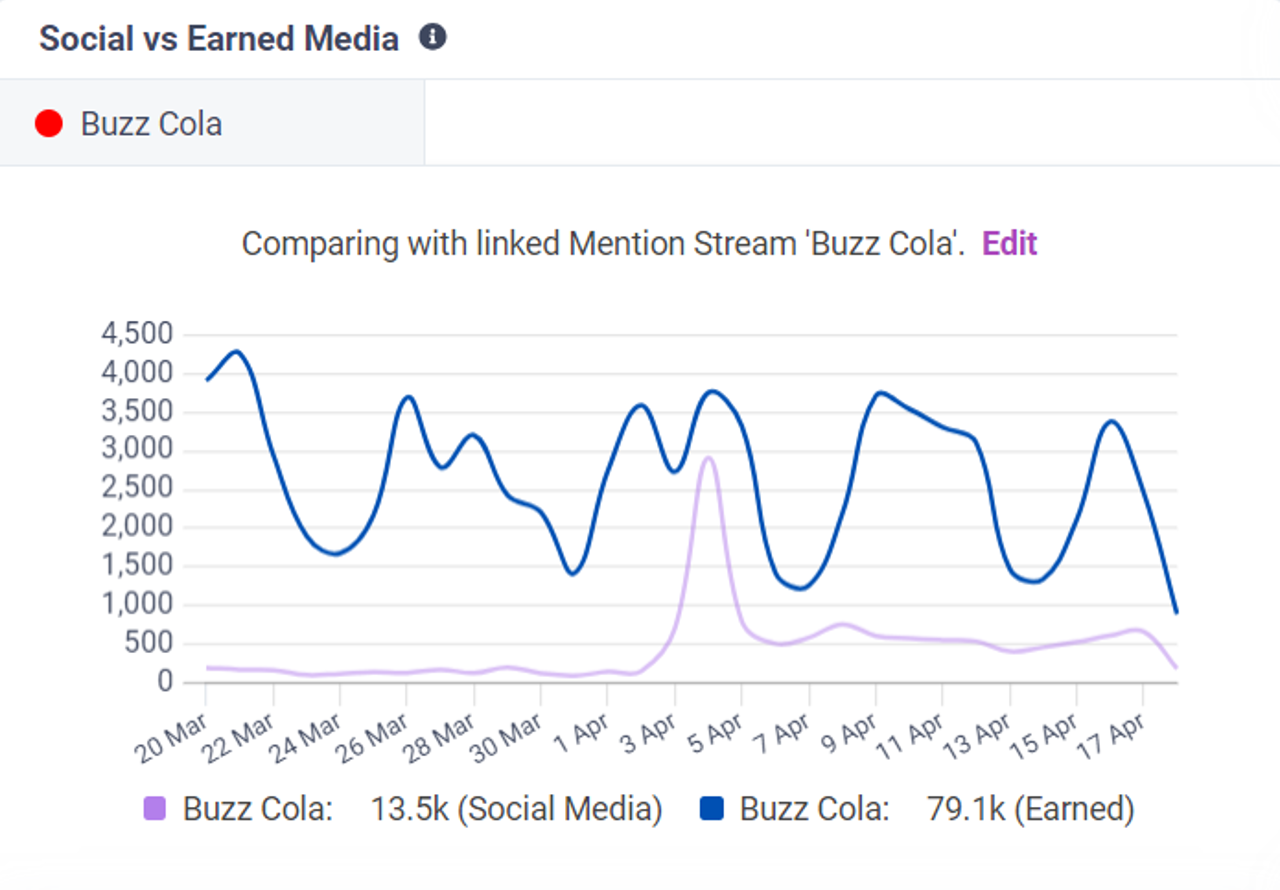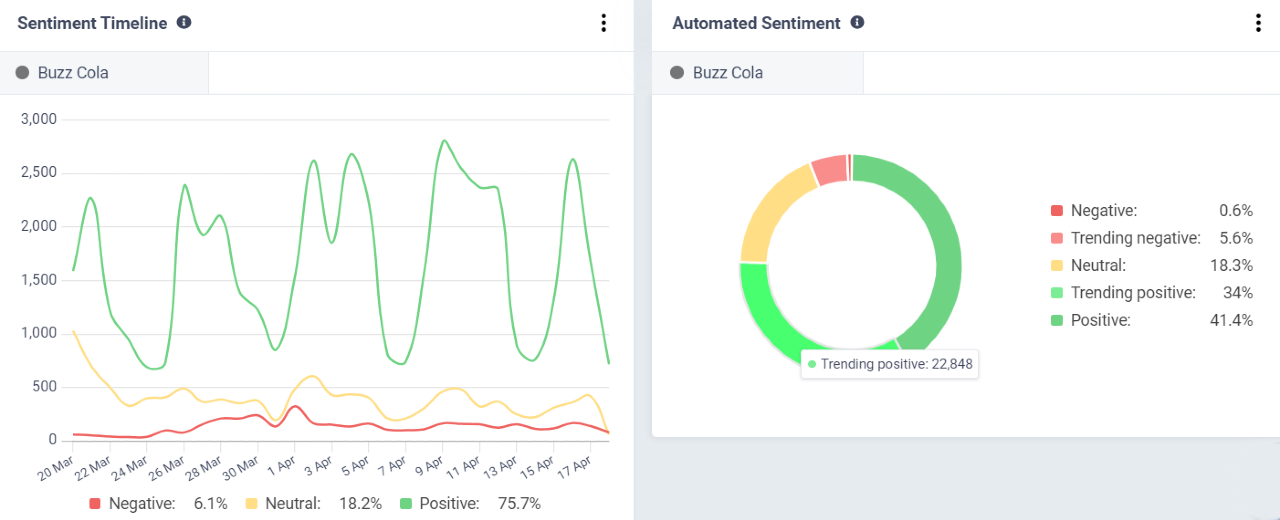Monitoring and measuring the impact of your earned media is critical for today’s PR professionals. Especially when, according to the 2024 Global Comms Report, many industry leaders now expect their comms teams to drive influence and move the business needle.
Combing through the earned media coverage generated by your campaigns can help you understand the messages that worked, those that didn’t, and ensure you develop more effective strategies for the future. Plus, you can use it to demonstrate valuable ROI to the C-Suite.
AVE has long been the go-to metric, but it has its limits. Let's take a closer look at what AVE is, why it can be problematic, and what metrics PR teams can and should focus on beyond AVE...
What is AVE (Advertising Value Equivalency) in PR?
AVE is an abbreviation for advertising value equivalency, and it’s a long-standing metric in the PR and comms industry for measuring the impact of earned media.
Essentially, AVE represents the estimated cost to buy advertising placements of a similar size. For example, if your pitch or press release generates earned media across a two-page magazine spread, and the going ad rate for one page is $150, the cost to buy an ad equals $300.
Multipliers are then applied to calculate the advertising value equivalency. So if the multiplier was three, the estimated total AVE for this earned media coverage would be $900.
For a long time, this was the best or only way for PR teams to quantify the impact of earned media. For this reason, AVE has become the standard industry metric, and can be found in many public relations software platforms, including CisionOne (see below for a five-day example of AVE measurement).

What Are the Limitations of AVE in PR?
Of course, when it comes to calculating AVE (as illustrated above), there’s a catch: There is no standard industry multiplier (and some models don’t use a multiplier at all), meaning AVE can be an inconsistent measurement.
Another criticism is that it’s outdated. The metric’s use goes as far back as the 1940s, but with the evolution and digital transformation of the media industry, many experts argue that it no longer works for modern PR. The dispute around AVE has been rumbling for decades, with one PRWeek article suggesting it wasn’t fit for purpose as far back as the 1990s.
But besides its age and inability to establish consistent multipliers, what are some of the other limitations of AVE?
- AVE doesn't take into account social media. It’s not possible to assign a value to an individual post on X, Facebook, or LinkedIn update in the same way you can a printed page.
- Advertising and PR are different formats and don’t provide an apples-to-apples comparison. These disciplines work in different ways and are designed for a different purpose, making true comparisons nearly impossible. PR-generated editorial has more credibility than advertising, with the latter seeing its messaging carefully controlled by a third party.
- Earned media may not always be ‘positive’. Linked to the above point, AVE can’t tell you if the sentiment around the coverage is positive or negative, whereas an advertisement is designed to have a positive tone around a specific product or service.
- The ‘value’ of AVE can be misleading. AVE can often overlook one crucial area: targeting. For example, a niche print title with a small audience may generate a low AVE, but it might be speaking to exactly the right people. The low monetary value doesn’t take into the account the influence of the publication and audience.
These are only scratching the surface. For more, take a look at AMEC’s (International Association for Measurement and Evaluation of Communication) ‘Say No to AVEs’ campaign.
Cision’s Insights Sector Lead, Camille Rollason, summarized AVE’s shortcomings in our Measurement 101 webinar. “AVEs are limited as a measure, as they don’t account for qualitative considerations such as sentiment, prominence and message delivery,” she explained. “With those reasons in mind, it’s best to think about a more nuanced capturing of the prominence or impact of coverage, or measuring outcomes like a survey, shares or social engagement.”
Despite the conversation around AVE, it may still provide value (with the right context), but it shouldn’t be the only metric you use.
How to Measure the Impact of Earned Media (in 5 Steps)
If AVE isn’t the answer to your measurement challenges, then what is?
AMEC’s Barcelona Principles are a good place to start. They provide a framework for setting SMART (specific, measurable, actionable, relevant, and time-bound) goals and identifying outputs, outcomes, and potential impact.
Guided by those principles, here are five ways to go about measuring earned media and demonstrating the value of your work.
1. Track Audience Social Media Engagement Metrics
Social media should be a key part of any PR strategy. As journalists, media, and brands increasingly shift to, and boost their presence on, social platforms, the need to prove the value of these platforms is crucial.
If you’re operating brand social accounts, you’ll have access to built-in analytics tools that show social shares, comments, and likes – but where do you turn to find this information for earned media?
Media and social monitoring tools like CisionOne can help you track mentions over time, along with potential audience reach. CisionOne also allows you to compare earned media and social media volumes and overlay them to see any impact or correlation (as seen in the chart below).

2. Check Brand Sentiment
Brand sentiment around your earned media coverage can help you gauge how you are being perceived. It can also help you see how any earned media is aligning with intended brand messaging and positioning.
Sentiment analysis tools can categorize individual pieces of content as positive, negative, or neutral – and they can show you how that story evolves over time.
CisionOne’s sentiment analysis can also group together earned media that’s trending positive or trending negative, so you can drill down into the kind of coverage and topics that could easily move that sentiment in another direction.

3. Evaluate Website Traffic and Referral Sources
Your website is the central outlet for your brand’s online presence.
By monitoring traffic originating from earned media sources, you can assess the effectiveness of your PR and marketing efforts. Has earned media moved the needle? If so, it gives you tangible evidence of audience interest and engagement.
Comparing traffic data before and after the publication of earned media coverage also helps gauge its immediate impact on website visits. Ongoing monitoring then enables you to see the long-term effects of continuous PR efforts on driving traffic to your site.
Tools like Google Analytics provide detailed insights into many aspects of website traffic, including the source of traffic, user journeys, conversion metrics, and more. By understanding how audiences interact with your website following exposure to earned media, you can assess the effectiveness of your PR and marketing strategies.
4. Monitor Lead Generation and Sales
Has earned media driven prospects to your website or product landing pages?
Tracking conversion rates from earned media sources reveals how effectively your PR efforts translate into outcomes such as sign-ups, purchases, demo requests, or inquiries. Google Analytics can help with UTM parameters to track specific placements, while marketing automation platforms like HubSpot and Adobe Marketo feature conversion tracking capabilities.
This can help you implement strategies like compelling call-to-actions, personalized landing pages, and nurturing those in the discovery phase to maximize lead generation and improve conversion rates from earned channels.
5. Build Media Influence and Online Presence
While sales may be your ultimate goal, earned media can have a positive impact on your reputation and how and when you appear online.
It can build media influence and authority within your industry, and you can track your SEO (search engine optimization) visibility to help understand this through a platform like ahrefs.
Brand mentions and backlinks can positively impact your SEO rankings too, while coverage can enhance your presence and exposure across various digital platforms.
Ultimately, earned media can be an effective avenue to build relationships with influencers, optimize content for search engines, and foster a positive online reputation for your brand.
The Bottom Line on AVE and Measurement
Encourage your stakeholders and clients to think about the bigger picture when it comes to earned media. It’s always worth asking the question: How does it fit into your wider goals?
Qualitative and quantitative metrics will give a holistic view of the numbers and their meaning. While quantitative data can provide an early indicator of performance and what may or may not be working, qualitative metrics (like sentiment analysis) show correlation to specific outcomes and the impact for your organization.
You should also always be looking at how you can improve your earned media performance over time. By taking a step back and evaluating how to pitch and win over journalists, you can increase your earned coverage and extend its longevity and value.
Ready to learn more? Find out how CisionOne can help you analyze your earned media. Explore the platform or make time to speak with one of our experts.







